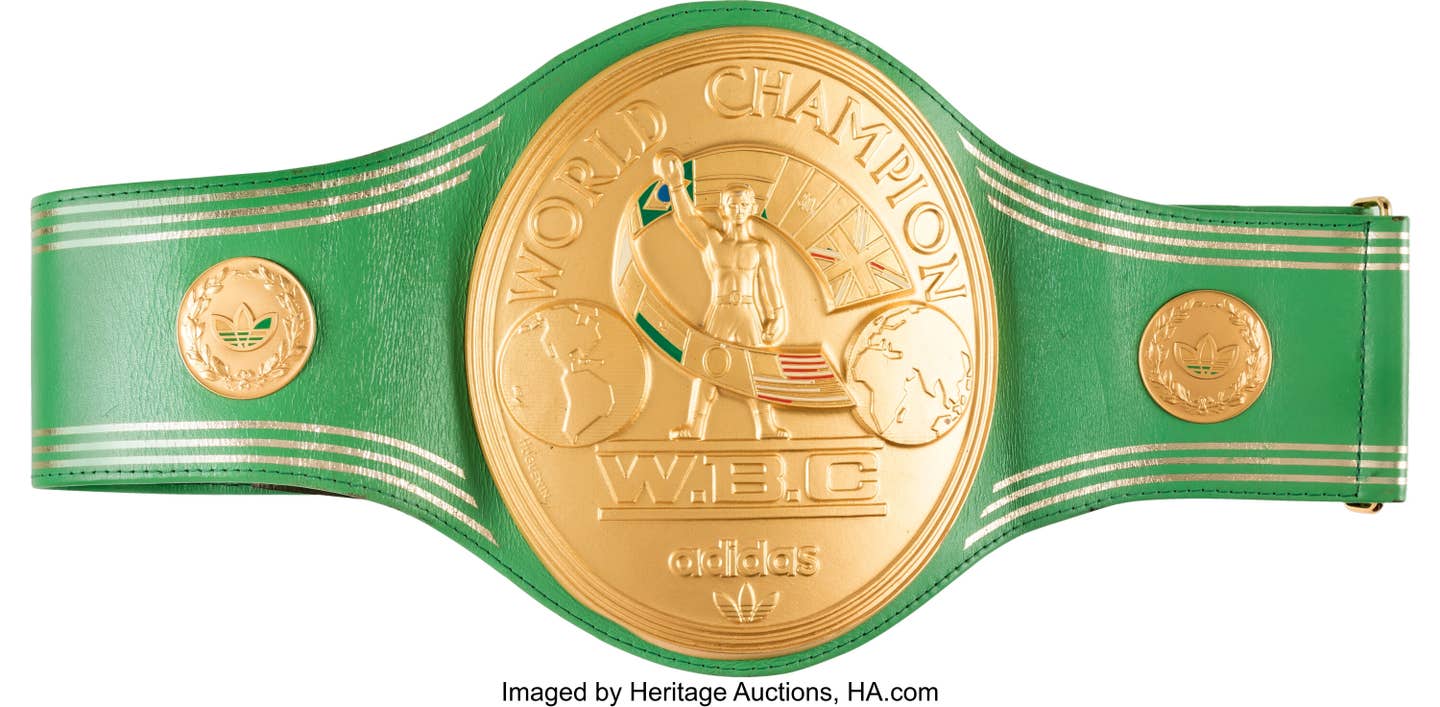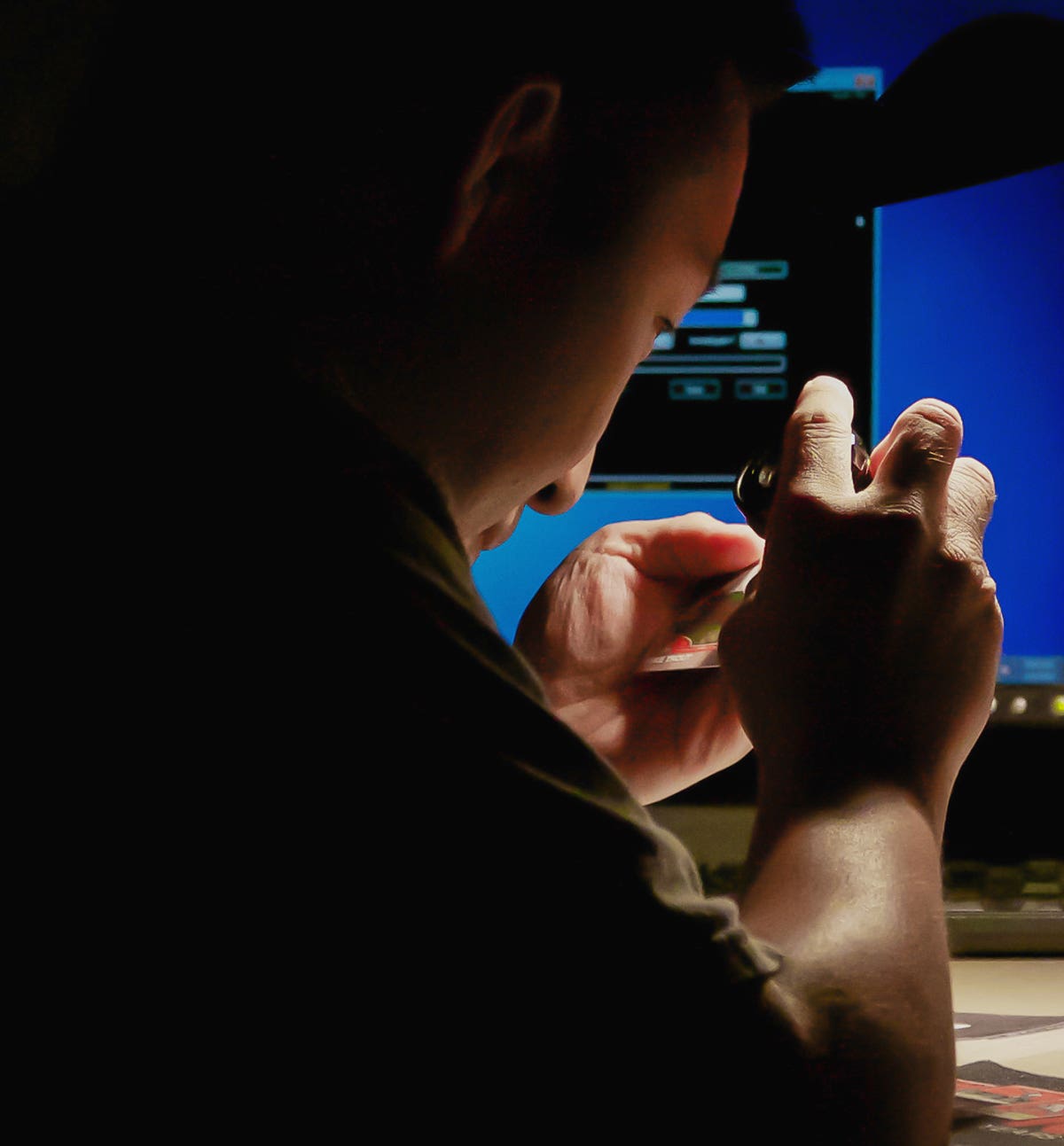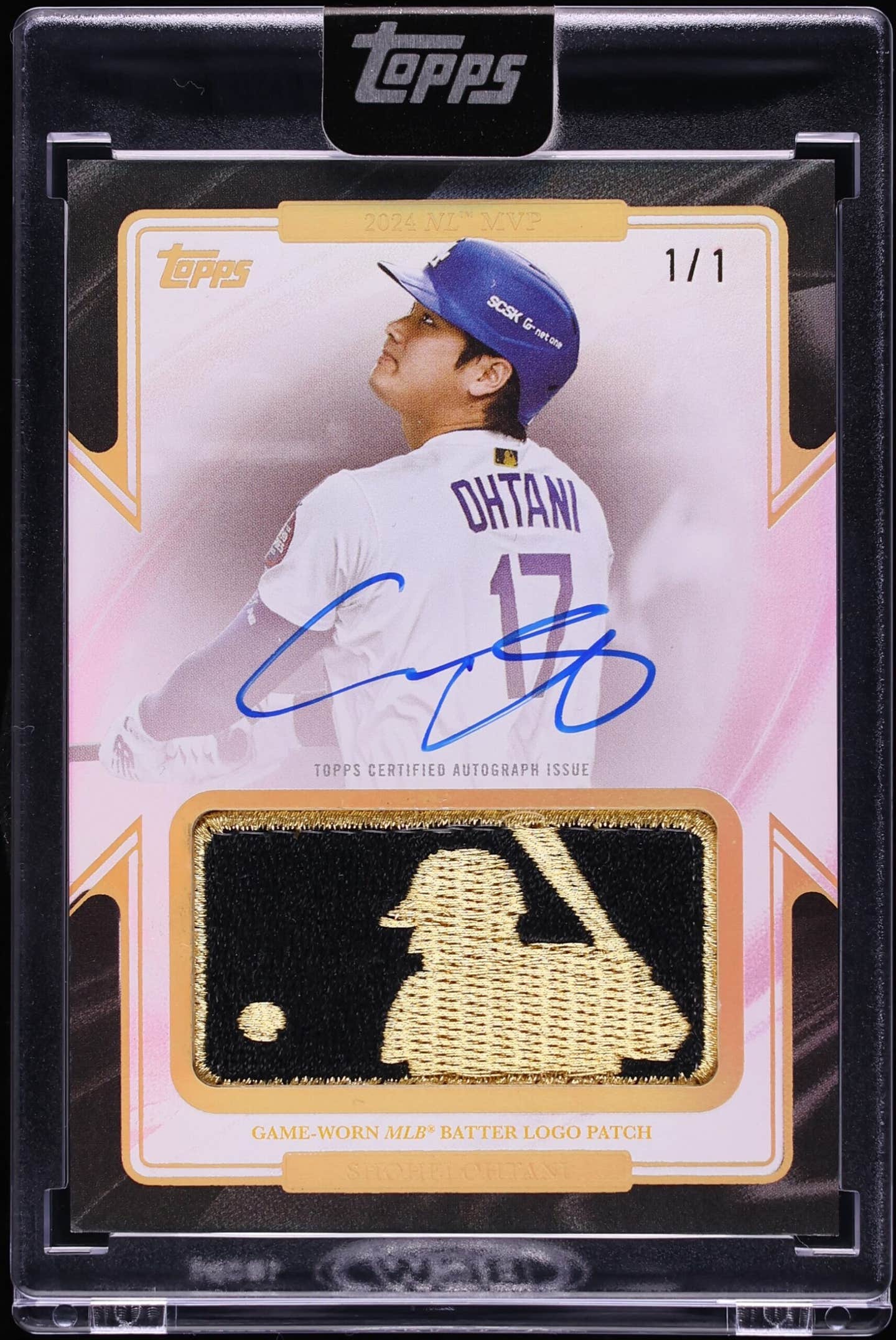
News
‘The People’s Collection’: Historic Muhammad Ali collection up for bid at Heritage
Troy Kinunen is a lifelong baseball fan, but as a young collector, he couldn’t afford cards, autographs and collectibles from heroes like Babe Ruth, Lou Gehrig, Ty Cobb and Mickey Mantle.
So he turned to another sports legend — Muhammad Ali.
When he attended a New York sports memorabilia convention in 1988, he bought his first Ali piece — a poster from his Nov. 14, 1966, fight with Cleveland Williams at Houston's Astrodome — only because it was one of the few items he could afford.
"It was colorful, it was cardboard, it was kind of small, and I thought I could display it," says Kinunen, president and CEO of MEARS Authentications. "And a kind of light bulb went on at that very moment."
Kinunen spent the next three decades amassing more than 1,600 items related to the legend of Ali. He collected everything he could find that Ali wore and signed, including robes, gloves, trunks and even mouthpieces, including the one from The Rumble in the Jungle. He also collected every ticket, pass and all but one poster from each of Ali’s 61 bouts, as well as every photo he could find of the star formerly known as Cassius Clay.
He also collected such rare keepsakes as the elaborately embroidered prayer cap gifted to him before 1975's Thrilla in Manila and the red robe worn before his first fight with Joe Frazier in 1971.
Kinunen's entire Ali collection highlights Heritage Auctions' July 21-23 Summer Sports Catalog Auction.
"Quite simply, it is the most comprehensive Muhammad Ali collection ever to come to auction," says Chris Ivy, director of sports auctions at Heritage. "What Troy has done here is tell Ali's life story with treasures that were present for every bout and every brag and every historic highlight in between. It's one of the most extraordinary collections we have ever been honored to offer."
Kinunen admits he knew very little about Ali when he bought his first poster. But he became consumed with the boxing legend after seeing him interact with fans at different conventions. Though slowed by age and Parkinson’s, Ali was still The Champ, posing for photos and sparring and shuffling with awestruck fans.
"The lightning bolt hit me, and I was fully dedicated to collecting him," Kinunen says. "I had never seen anything like that. It was so inspirational, so special, to witness it."
Kinunen soon began taking out classified ads in Louisville, Ky. seeking memorabilia Ali might have given to hometown fans who knew the young Cassius Clay. The result was a goldmine of treasures that Ali had given friends and acquaintances.
"They all had a story," Kinunen said. "They met him. They hung out with him. Sometimes they were boyhood friends. Or it was, ‘I went to the gym, and he gave me his gloves.’ Or, 'I saw him this day and he signed an autograph for me.’ Everybody I met — dozens of people, maybe a hundred people — they all had the exact same experience, so I was able to get all this great stuff direct from the source."
Kinunen’s collection tells the story of Ali’s career, including a rare 1960 photo of Cassius Clay with Joe Martin, the Louisville police officer who pushed the young boxer into the ring in 1954 and later served as his boxing coach; a 1959 photo that's likely his first newspaper portrait; and a 1960 Intercity Golden Gloves team-signed photograph that bears what's likely Cassius Clay's first autograph.
As Kinunen began his career in the sports collectible industry, he was able to start buying items once out of his price range, including keepsakes that had been in the collection of Ali's longtime cornerman Drew "Bundini" Brown. After each fight, Brown took gloves, robes, trunks and whatever he could get his hands on and kept them in a storage locker. Eventually, the contents of that locker sold at auction, and Kinunen snapped up whatever he could, including the red robe Ali wore entering his first fight with Joe Frazier on March 8, 1971, at Madison Square Garden, the 15-round bought known as the "Fight of the Century."
"It's the crown jewel of the collection," Kinunen says. "The red robe from the Frazier fight is iconic on many levels. It's just very special. It catches your eye. It's a little different than everything else. And it's from a fight he lost. A lot of boxers, after they lose the first one, they quit or weren't heard from again. But that motivated him more than anything to come back and become champion again. That robe is the story of the comeback. It's a symbol of: Don't quit, don't give up, and overcome even the biggest adversity, such as losing to Joe Frazier at Madison Square Garden."
Also from the Bundini collection, Kinunen was also able to acquire the WBC Heavyweight Championship Belt Ali reclaimed when he knocked out George Foreman in eight rounds during October 1974's Rumble in the Jungle. Ali had been stripped of the belt seven years earlier when he refused to be drafted into the Army to fight in Vietnam.
Kinunen also was able to track down one of the crowning achievements of his collection: the prayer cap given Ali before the Thrilla in Manila in 1975. Heritage calls the cap one of “the most significant pieces ever presented by Heritage Sports.”
The photo-matched cap is black velvet with golden embroidery and pink beading, with the Muslim star and crescent on the front and the name "Muhammad Ali" stitched on each side. The pristine-condition cap, matched to a photo taken while Ali prayed at a mosque on Sept. 25, 1975, is from the personal collection of assistant equipment manager Wali Muhammad. According to Heritage, the cap attracted crowds of collectors when displayed last year at the National Sports Collectors Convention in Chicago.
The collection also includes the sign that once adorned the entrance to the 5th St. Gym in Miami Beach, where Ali trained from 1960 until opening his private training camp in Deer Lake, Pa. 12 years later. The gym was founded in 1950 by Chris Dundee, who employed his brother Angelo as trainer. Ali's presence at the 5th St. Gym attracted the likes of Frank Sinatra, Burt Lancaster and the Beatles to the landmark that was demolished in 1993. The sign, which comes from Angelo Dundee's collection, is eight feet long and three feet tall.
According to Heritage, Kinunen never set out to amass the greatest Ali collection ever assembled. He simply accrued whatever items he could find until he had an historic collection connected to the boxer known as “The Greatest of All Time.”
He eventually realized it was time to share his collection with others who revere Ali as he has over the last three decades.
"He was The People's Champion, and this is the people's collection," Kinunen says. "These things need to go back to the world, to the institutions and museums and people who appreciate Muhammad Ali as much as I did. It took me a year to make up my mind about consigning it, and in the end, I thought Heritage Auctions was the perfect fit for this.
"I mean, the Muslim prayer cap, that's a religious artifact, and Ali was a spiritual leader to millions and millions of people. And to have that artifact locked up in Milwaukee, Wis. just doesn't make sense. That piece now has the potential to be viewed and enjoyed and appreciated by millions. That's why we're having this auction, to bring these things to the people who appreciate Muhammad Ali the most."
You Also Might Like: NASCAR legend Richard Petty honored with NFT collection
Jeff Owens is the editor of SCD.








